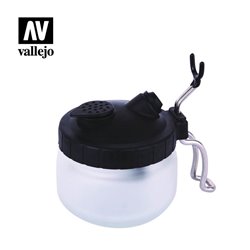A tare weight is simply a vehicle's unladen weight and is commonly displayed on the side of railway wagons.Tare...
No products
Product successfully added to your shopping cart
There are 0 items in your cart. There is 1 item in your cart.
Search Tips
Christmas and New Year
We are dispatching orders every weekday apart from Christmas Day, Boxing Day and New Year's Day.
If you order is time critical, select next day delivery at checkout.
The shop in Sandown is closed from 25th December, reopening on 30th December.
What is the best way to store airbrushes?
The best way to store airbrushes is to keep them clean, protected and readily accessible for future use. Proper storage ensures they remain in good working condition and prevents damage to delicate components, such as the needle and nozzle.
After each use, always clean your airbrush thoroughly. Residual paint can dry and clog the internal mechanisms, leading to performance issues. Once cleaned, ensure it is completely dry before storing, as moisture can lead to corrosion or mildew, especially in a damp environment. A quick wipe with a soft cloth and airing the parts can help avoid this.
When storing your airbrush, use a purpose-designed airbrush holder or stand. These keep the airbrush secure and prevent it from rolling off surfaces or being accidentally dropped. If you don't have a stand, consider a foam-lined storage box or case to cushion the airbrush and protect its needle and nozzle from impact.
For long-term storage, disassemble the airbrush partially and lightly lubricate moving parts with a small amount of airbrush lubricant. This ensures that everything stays in working order and prevents any components from seizing up. Keep smaller parts, such as needles and nozzles, in labelled compartments or small containers to avoid misplacing them.
Finally, store your airbrush in a clean, dry and dust-free environment. Avoid locations with excessive humidity or temperature fluctuations, such as sheds or garages, as these conditions can lead to rust or damage to seals. A drawer, cupboard, or dedicated toolkit in your workspace is ideal. By following these steps, you can ensure your airbrush remains reliable and ready for your next project.
Click here to receive the tips weekly in your mailbox. You can unsubscribe at any time.








